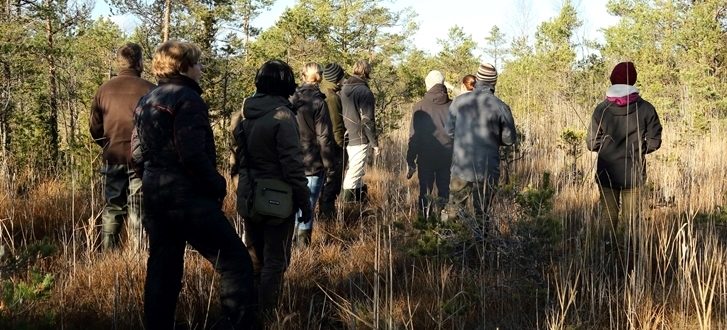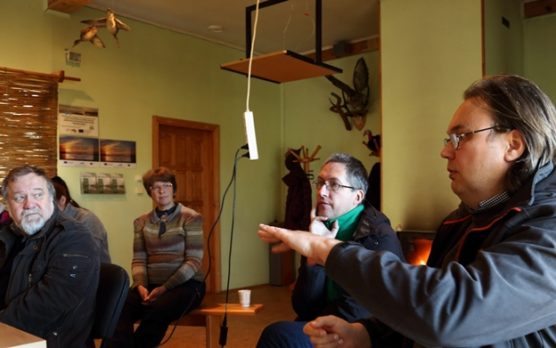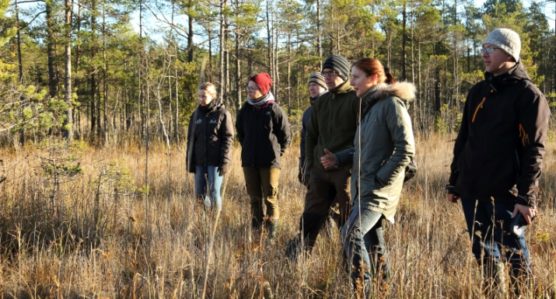Lake Engure Nature Park is one of the most important areas for conservation of alkaline fens in Latvia. The area is selected as one of the LIFE Peat Restore action sites where hydrological restoration will be carried out. The alkaline fens are suffering both from drainage and lack of traditional management leading to spread of trees and shrinking of open mire area. Settling of trees, in turn, causes increased evapotranspiration, thus contributing to the desiccation and further degradation of the fens.
Prior to restoring the fens, a management plan for the particular fen area is being elaborated by LIFE Peat Restore experts. The plan will help to select appropriate measures, both within the project and long term.
In November7, 2017, a meeting took place in Lake Engure Lecture and Information Centre, very close to the project area. representatives of the LIFE Peat Restore project partners University of Latvia and Lake Engure Nature Park Fund participated in the meeting, as well as representatives of the JSC “Latvian State Forests” (the land owner) and Nature Conservation Agency (national authority responsible for nature conservation). The participants were introduced to the results of vegetation mapping and hydrogeological studies and the draft plan, resulting in fruitful discussions. At the end of the meeting, the participants visited the management area.
The plan will be non-binding, however, the actions proposed will be useful both for implementing the project actions and for the after-LIFE management in long term. It will provide also substantiation for attracting funding for after-LIFE management.




